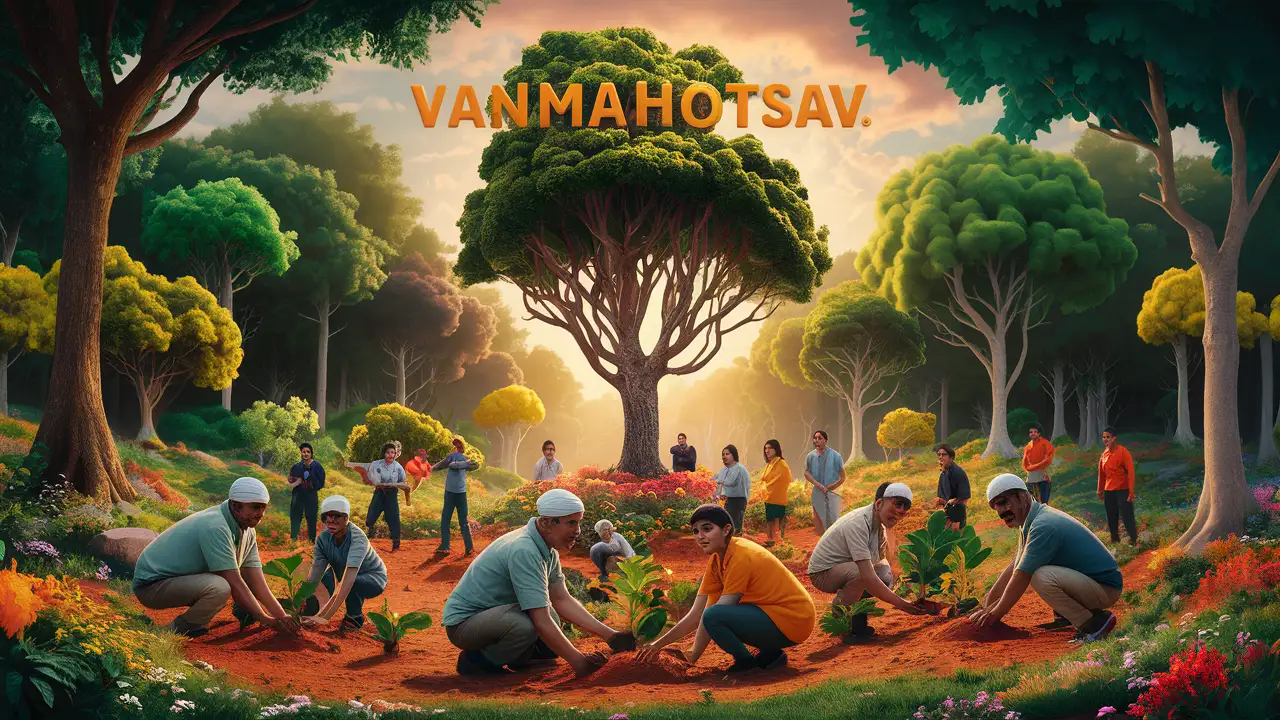Vanmahotsav: Celebrating India’s Green Heritage

Vanmahotsav: Celebrating India’s Commitment to Environmental Conservation
Vanmahotsav, or the Forest Festival, stands as a testament to India’s long-standing reverence for nature. Celebrated annually in the first week of July, this festival underscores the importance of trees and forests in our lives. Initiated in 1950 by K.M. Munshi, the then Union Minister for Agriculture and Food, Vanmahotsav has grown into a national movement aimed at promoting afforestation and raising awareness about the environment.
The genesis of Vanmahotsav can be traced back to the post-independence era when India was grappling with deforestation and the consequent ecological imbalance. Recognizing the critical need to restore the green cover, Munshi envisioned a festival that would not only encourage tree planting but also instill a sense of responsibility towards nature among the citizens.
Vanmahotsav holds significant environmental and social value. It aims to combat the effects of deforestation and climate change by encouraging the planting of trees, which play a vital role in maintaining ecological balance. Trees provide oxygen, improve air quality, conserve water, preserve soil, and support wildlife. They also offer shade, reduce temperatures in urban areas, and contribute to the aesthetic and recreational value of the environment.
During Vanmahotsav, a wide array of activities are organized across the country to promote tree planting and environmental conservation. Schools, colleges, governmental and non-governmental organizations, and community groups actively participate in these events. Activities include:
1. Tree Planting Drives: The most common and significant activity of Vanmahotsav is the large-scale planting of saplings. Various species of trees, especially those native to the region, are planted to ensure biodiversity.
2. Awareness Campaigns: Educational institutions and organizations conduct seminars, workshops, and rallies to educate people about the importance of trees and the urgent need for afforestation.
3. Competitions and Cultural Programs: To engage the younger generation, schools organize competitions like essay writing, painting, and debates on environmental themes. Cultural programs, including skits and plays, are performed to highlight the importance of forest conservation.
4. Adoption of Trees: Many organizations promote the adoption of trees, where individuals or groups take responsibility for nurturing and protecting a tree until it is well-established.
Over the decades, Vanmahotsav has significantly contributed to increasing India’s green cover. The festival has not only resulted in the planting of millions of trees but has also succeeded in raising public awareness about environmental issues. It has fostered a culture of environmental stewardship, inspiring citizens to take proactive steps in conserving nature.
The festival has also played a crucial role in the preservation of biodiversity. By encouraging the planting of indigenous tree species, Vanmahotsav helps maintain the ecological balance and supports the habitats of various flora and fauna.
Despite the success of Vanmahotsav, several challenges persist. Urbanization, industrialization, and population growth continue to exert pressure on India’s forests. Illegal logging, forest fires, and encroachments pose significant threats to the green cover.
To address these challenges, it is imperative to strengthen the implementation of afforestation programs and ensure community participation. Involving local communities, especially indigenous people, in conservation efforts can lead to more sustainable outcomes. Additionally, integrating modern technology, such as Geographic Information Systems (GIS) and remote sensing, can enhance the monitoring and management of afforestation projects.
Vanmahotsav is more than just a festival; it is a movement that embodies India’s commitment to environmental conservation. As we celebrate this festival, it is crucial to remember that the responsibility of protecting our environment lies with each one of us. By planting trees, nurturing them, and spreading awareness, we can contribute to a greener and healthier planet. Vanmahotsav reminds us that in the embrace of nature, we find not just beauty and serenity, but also the key to our survival.
Also read: CBI Arrests GST Commissioner and Middleman in Rs. 3.83 Lakh Bribery Case




